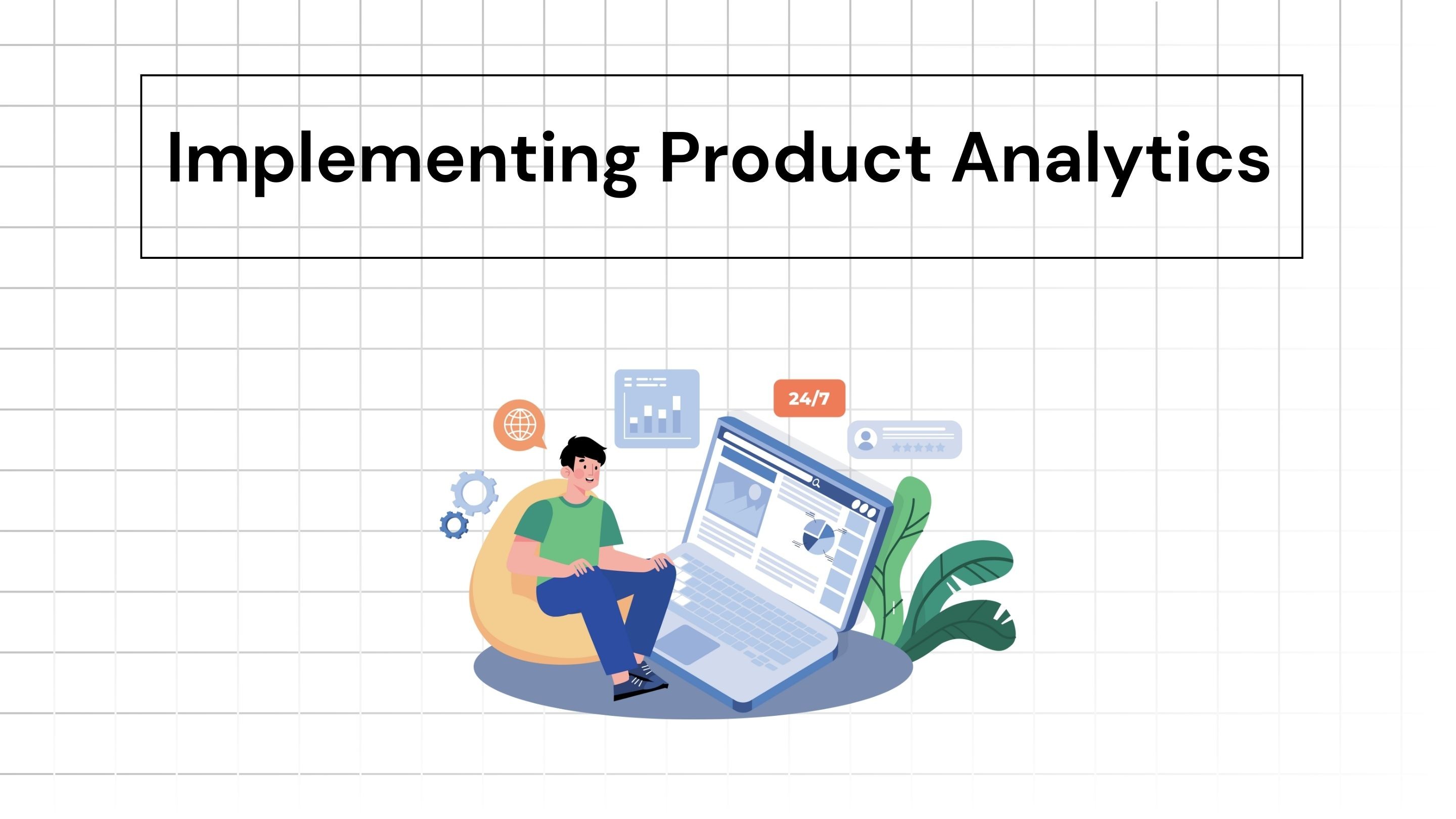
Iterate AI
Jan 22, 2025
Product Manager and Product Analytics are almost synonymous. It is because today most SaaS companies expect product managers to own and execute product analytics.
As a product manager, understanding your users' behavior, identifying bottlenecks, and measuring metrics can provide a data-driven foundation for decisions.
However, implementing product analytics effectively requires strategic planning and execution. Moreover, it needs heavy developers’ bandwidth.
Here are 10 critical steps to guide you through the process. Additionally, let’s also see how PMs can implement analytics faster without depending on developers.
What Are Your Objectives
Be crystal clear about what you want to achieve with product analytics. Have a plan on what you want to do with this in 3, 6,12, and 24 months. Consider whether you want to:
Optimize user retention to improve lifetime value.
Identify friction points in the onboarding process to reduce churn.
Evaluate feature adoption to prioritize future development.
Align product performance metrics with broader company KPIs.
It can be all of the above as well. However, you need to know your company's primary use of product analytics. Clear objectives turn data into analytics and insights. Without goals and objectives, you just have a bunch of numbers.
Identify Key Metrics
Not all metrics are equally valuable. Focus on metrics that directly inform decision-making and align with your product’s growth stage. Examples include:
Acquisition: Measure the effectiveness of your marketing channels (e.g., cost per acquisition, sign-up conversion rates).
Activation: Define what constitutes activation for your product and track how quickly users reach this milestone.
Engagement: Analyze user behaviors tied to product stickiness (e.g., frequency of use, depth of engagement across features).
Retention: Use cohort analysis to identify trends and segments with the highest churn risk.
Revenue: Monitor revenue metrics like ARPU (Average Revenue Per User) and customer lifetime value (CLV) to understand your financial impact.
Map the User Journey
Go beyond basic and develop a detailed user journey map with the full spectrum of user interactions. Try to keep it dynamic as your product evolves. Break down each touchpoint by user segment or persona to identify varying behaviors.
Incorporate both quantitative and qualitative insights to build a richer picture of the journey.
Identify moments of delight and frustration to prioritize areas for improvement.
Choose the Right Analytics Tool
Tool selection should be driven by your product’s complexity, scale, and the maturity of your analytics needs. Consider the following:
Scalability: Can the tool handle your current and future data volume?
Flexibility: Does it support custom reporting and integrations with your tech stack?
Ease of Implementation: How easily can your engineering team implement and maintain it?
Advanced Features: Does it provide predictive analytics, behavioral cohorts, or machine learning capabilities?
You can ask for a proof-of-concept with the tools to test compatibility and ROI.
Collaborate with Engineers/Developers
Analytics implementation is a cross-functional effort specifically with the leadership and engineering team. Communicate the "so what" of analytics—how the insights directly support business goals.
Collaborate with engineers to implement events and write code.
Implement Event Tracking
Prioritize events that align with business goals to avoid tracking overload.
Leverage a clear naming convention for events, such as button_click:signup or feature_use:report_download, to simplify reporting.
Capture contextual properties for each event, like user type, plan tier, or device type, to enable deeper analysis.
Document the entire event tracking schema for reference.
Ensure Data Governance
Develop a centralized documentation hub for event tracking schemas, definitions, and ownership.
Regularly audit event data for accuracy, duplication, and relevance.
Implement access controls to ensure sensitive data is only available to authorized personnel.
Stay compliant with regulations like GDPR, CCPA, and others, embedding privacy considerations into every aspect of your data strategy.
Strong governance ensures analytics remains a reliable decision-making tool.
Validate Your Data
PMs understand that actionable insights depend on accurate data. Rigorous validation includes:
Cross-referencing analytics data with backend logs to identify discrepancies.
Setting up real-time alerting for data anomalies, such as sudden spikes or drops in key metrics.
Running periodic sanity checks to confirm that event data matches expected behaviors.
Build Dashboards and Reports
Dashboards should be tailored to specific audiences, you can go beyond basics by:
Designing dashboards that integrate metrics across tools for a holistic view.
Using visualization best practices to highlight trends and anomalies clearly.
Automating report distribution to reduce manual effort and improve consistency.
Building exploration capabilities into dashboards to allow stakeholders to drill down into specific areas of interest.
Well-designed dashboards transform data into a strategic asset.
Iterate, Improve, Automate
Analytics is never static. Experienced product managers:
Regularly revisit KPIs to ensure they reflect current business priorities and product goals.
Use experimentation frameworks, like A/B testing or multivariate testing, to validate hypotheses and refine features.
Solicit feedback from stakeholders to identify gaps in analytics coverage or reporting.
Stay informed about emerging analytics trends, tools, and methodologies to maintain a competitive edge.
Continuous improvement ensures that your analytics implementation adapts to your evolving needs.
Implement Analytics 90% faster with Iterate AI
Iterate AI can streamline the implementation of analytics, event tracking, and dashboard creation. Its robust capabilities allow teams to seamlessly set up event tracking without extensive engineering resources, ensuring that data collection aligns with business objectives. Additionally, Iterate AI’s advanced dashboard features enable teams to visualize data effectively and uncover actionable insights. With Iterate AI product managers can focus more on strategy and decision-making instead of battling with the set up. Get started with analytics for your company.
